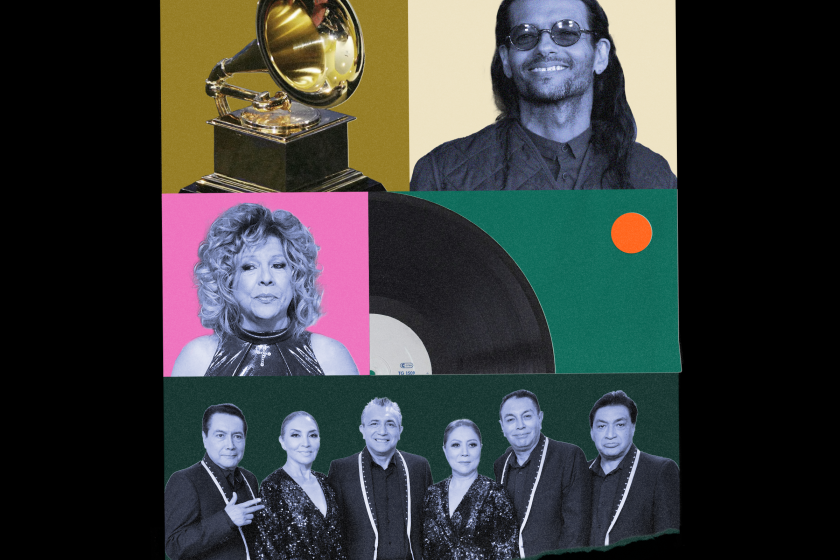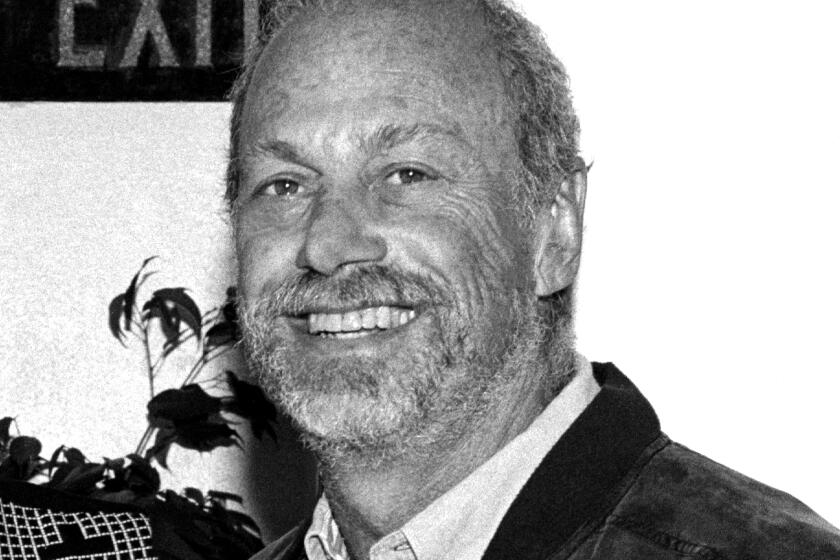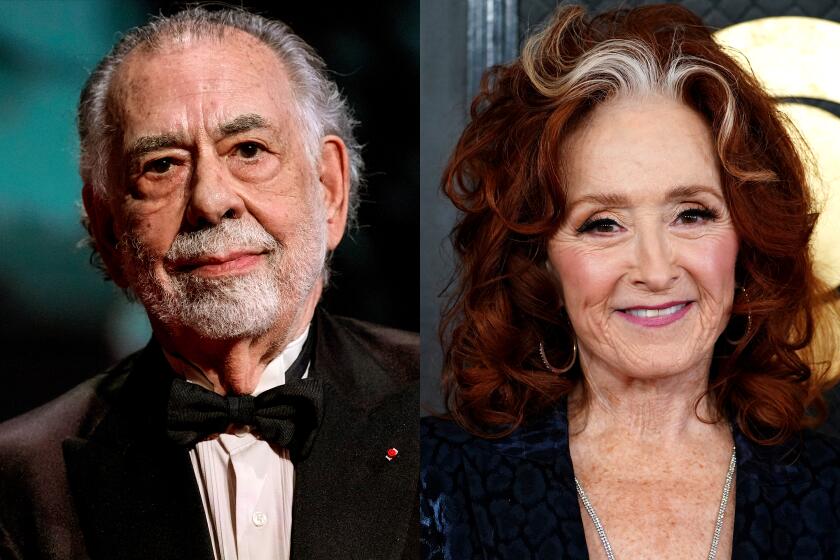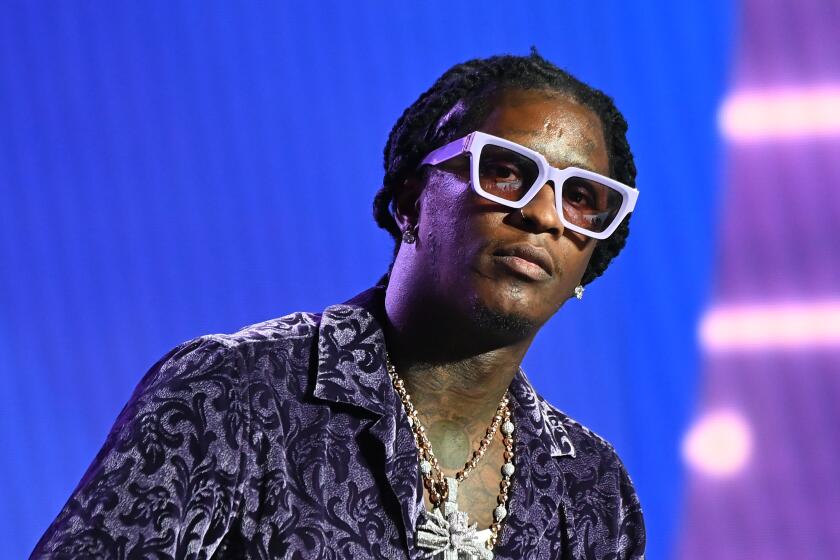It’s a Different Breed of Cat
On any given night, high-heeled, platinum blonds vied for attention on the dance floor. Aspiring rock musicians with impossibly teased hair crowded the bar and offered their standard pickup line: “Come see my band play.” In VIP corners, rock notables mixed easily with Hollywood scenesters. And always there was the thunder of loud music, the promise of fast sex, the smell of hairspray. A decade after its demise, this is how the faithful remember the Cathouse.
Within weeks of its opening in the late 1980s, the Cathouse became “world-famous,” L.A.’s place to be for rock ‘n’ roll kicks. A six-year run saw it evolve from a lightning-strike success into a legendary landmark.
Now original owner Riki Rachtman wants to find out if lightning can strike twice. The promoter has revived his old playground at the Martini Lounge on Tuesday nights. Why the sudden urge to revisit the past? “I saw a screening of the movie ‘Rock Star’ and it made me miss the Cathouse,” Rachtman says. It’s easy to understand his nostalgia. The Cathouse opened in 1986 at a disco venue called Osko’s, a partnership between Rachtman, a dance club deejay, and scenester Taime Downe. From early on, the Cathouse’s reputation came from its crowd-pretty-boy rockers and scantily dressed groupies who embodied the sexy, fast-lane, rock ‘n’ roll lifestyle. “It was really sleazy back then-the way people dressed and the way they acted. It was sex, drugs and rock ‘n’ roll. It sounds so cliche to say that now, but that’s just the way it was,” Rachtman recalls.
Clubgoers danced to a soundtrack of Motley Cre and Led Zeppelin. While the flamboyant Sunset Strip scene was churning out hair bands such as Warrant and the Bullet Boys, the scene at the Cathouse had a more edgy, underground vibe rooted in punk and what Rachtman calls “dirty rock ‘n’ roll.”
Many of the Cathouse’s regular patrons-members of Guns N’ Roses, LA Guns, Faster Pussycat, Jet Boy, Bang Tango-became players in L.A.’s notorious glam-metal movement of the late ‘80s. “All the people who hung out in the club started putting records out,” remembers Joseph Brooks, who deejayed at the Cathouse throughout its original run. “The customers were becoming the ones being played on the dance floor. I don’t think that’d ever happened at a club before-the guy who was once just another person on the barstool suddenly became a superstar of the world. It was fascinating. The Cathouse went from obscurity to stardom because of that.”
*
The club’s popularity reached its height when Guns N’ Roses frontman Axl Rose wore a Cathouse T-shirt in the 1989 video for “Paradise City.” Lines formed around the block to get in. By this time the Cathouse had relocated to the Probe [now the Playroom], Downe had left the partnership, and Rachtman sought to leverage the club’s name by booking more live acts and merchandising the Cathouse brand.
Cathouse was emblazoned on T-shirts, caps, even swimwear. But a certain leather vest with a motorcycle-club-style “Cathouse Hollywood” logo was reserved for the Alumni, a gang of Rachtman’s friends who would do whatever they liked at the club. “We’d get drunk, we’d get chicks, we’d get in fights,” Rachtman says. “We were the type of guys who were usually thrown out of clubs. So instead of getting thrown out, this time we ran it.”
The Alumni included members of Guns N’ Roses. “We were kind of like cheap L.A. royalty there,” says former GNR guitarist Slash.
Because of the Cathouse, Rachtman became famous. He was hired to host MTV’s heavy-metal show “Headbanger’s Ball” from 1990-95, and deejay a 1991 show called “Radio Cathouse” on rock station KNAC-FM.
The party ended in 1993, as the wild sex and party lifestyle of the late ‘80s buckled under the weight of ‘90s political correctness and a new form of doleful, dressed-down rock called grunge. The antics of glam-metal became almost clownish by comparison. After the Cathouse closed, Rachtman continued as a radio deejay. He tried to reopen the club in 1998 but with little success.
In June he opened the Cathouse again on the club’s original Tuesday night. But times have changed. Those who continue to love that “dirty rock ‘n’ roll” are older now. Much of the original Cathouse crowd, then in their 20s, now has to forgo that up-all-night party ethic for day jobs and families. Rachtman himself runs Pool School, a skateboard company.
But while patrons aren’t going to find Axl Rose on the dance floor at the new Cathouse, they will get a good dose of rock and a live band every week.
Recent shows have featured local favorites or reunions from former Cathouse-era bands such as Junkyard and Rhino Bucket. There have also been metal tribute bands, and Rachtman hopes to book more. Rachtman also tries to keep a playful spirit by hosting contests for the best mullet haircuts, best wet T-shirt and karaoke performance.
Rachtman can’t deny that the scene has changed. “I wish it could be like then, but it never will. The music scene isn’t what it was like back then-that type of decadence.” But he’s determined to keep the Cathouse legend alive for those who were there from the beginning and those who want to share in the nostalgia and a little piece of rock ‘n’ roll history.
*
Cathouse, Tuesdays at the Martini Lounge, 5657 Melrose Ave, Los Angeles. 9 p.m.-2 a.m. Cover varies. (323) 467-4068.
More to Read
The biggest entertainment stories
Get our big stories about Hollywood, film, television, music, arts, culture and more right in your inbox as soon as they publish.
You may occasionally receive promotional content from the Los Angeles Times.






